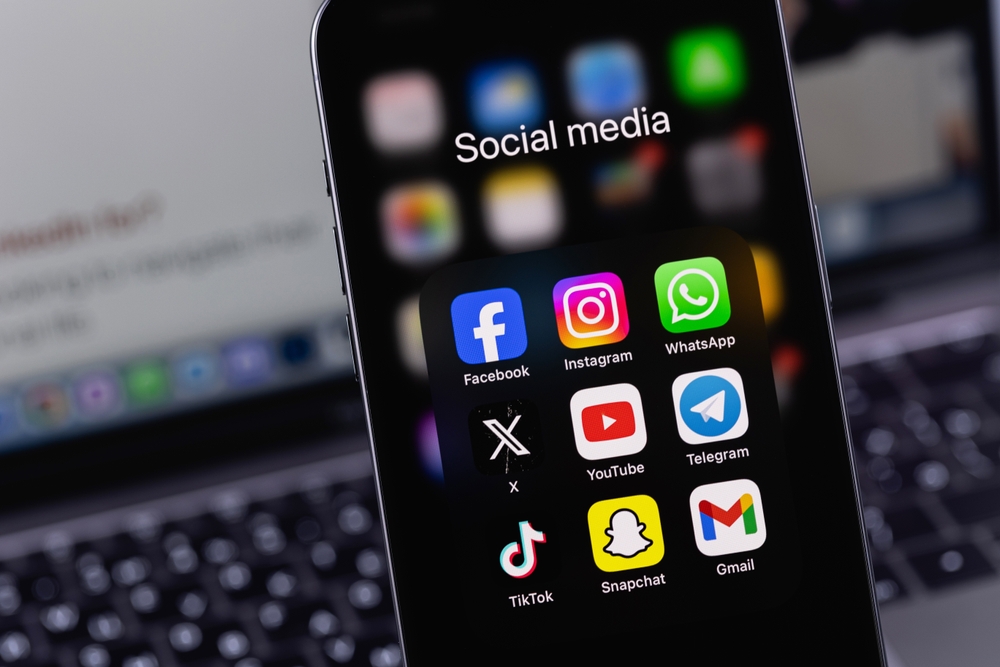In our super-connected world, social media has woven itself into nearly every aspect of our daily lives. From sharing milestones and connecting with friends to staying updated with global events, social media platforms offer numerous benefits. But more and more people are worried about how social media affects our mental health. As we navigate this digital landscape, establishing healthy boundaries and prioritizing digital well-being is essential for maintaining our mental health.
The Double-Edged Sword of Social Media
Social media platforms, such as Facebook, Instagram, Twitter, and TikTok, provide a sense of community and connection. They allow us to keep in touch with loved ones, discover new interests, and participate in global conversations. These benefits, however, come with potential drawbacks.

1. Comparison and Self-Esteem Issues: Constant exposure to curated images and posts can lead to unrealistic comparisons and diminished self-esteem. Seeing others’ highlight reels might make us feel inadequate or insecure about our own lives.
2. Cyberbullying and Online Harassment: Social media can be a breeding ground for cyberbullying and harassment. Negative comments and hostile interactions can take a toll on mental health, leading to anxiety, depression, or stress.
3. Addiction and Time Management: The endless scroll of social media feeds can lead to excessive screen time, affecting productivity and mental well-being. Social media addiction can disrupt sleep patterns and decrease face-to-face interactions.
4. FOMO (Fear of Missing Out): Seeing others’ events and experiences online can sometimes make us feel left out or like we’re not measuring up. FOMO can lead to increased social media use, which may exacerbate mental health issues.
Establishing Healthy Boundaries
To mitigate the negative impacts of social media, it’s crucial to establish healthy boundaries. Here are some strategies for managing your social media use effectively:
1. Set Time Limits: Allocate specific times for social media use each day and stick to these limits. Tools and apps that monitor screen time can help you stay within these boundaries.
2. Create Tech-Free Zones: Designate areas in your home where social media and electronic devices are not allowed, such as the dining table or bedroom. This helps in reducing screen time and fostering in-person interactions.
3. Curate Your Feed: Follow accounts that lift you up and inspire you. Unfollow or mute those that add stress or negativity. Customizing your feed can boost your mood and well-being.
4. Schedule Social Media Breaks: Consider taking periodic breaks from social media, such as a digital detox day or weekend. This can help reset your relationship with social media and reduce stress.
5. Mindful Engagement: Be intentional about your social media interactions. Have real conversations and steer clear of endless scrolling. This can help you stay connected without falling into negative patterns.
Promoting Digital Well-Being
Beyond setting boundaries, fostering digital well-being involves cultivating a positive relationship with technology. Here are a few ways you can boost your digital well-being:
1. Practice Mindfulness: Make mindfulness a part of your daily routine. Mindfulness practices, such as meditation or deep breathing, can help manage stress and improve your overall mental health.
2. Engage in Offline Activities: Pursue hobbies and interests that do not involve screens. Engaging in activities like reading, exercising, or spending time with loved ones can provide a healthy balance to your digital life.
3. Educate Yourself: Stay informed about the potential effects of social media on mental health. Understanding the psychological impact of social media can help you make more informed decisions about your usage.
4. Seek Professional Help: If social media use is significantly impacting your mental health, consider seeking support from a mental health professional. Therapy or counseling can provide strategies to manage social media-related stress and improve your well-being.
5. Promote Positive Online Communities: Join and support online communities that promote positivity and mental health awareness. By sharing and engaging with uplifting content, you help create a more encouraging digital space.
The Role of Social Media Platforms
Social media companies also have a role to play in promoting mental health. Many platforms are now introducing features to help users manage their well-being:

1. Usage Insights: Platforms like Instagram and Facebook offer tools to track screen time and set daily limits. These features aim to encourage users to be more aware of their social media habits.
2. Content Moderation: Efforts to reduce harmful content and cyberbullying are increasingly common. Enhanced reporting mechanisms and algorithms designed to detect inappropriate content are steps toward a safer online environment.
3. Mental Health Resources: Some platforms provide access to mental health resources and support networks. For example, mental health organizations partner with social media companies to offer helplines and educational materials.
Conclusion
Social media can greatly enhance our lives, but it’s crucial to use it thoughtfully. Setting healthy boundaries and focusing on digital well-being can help us enjoy its benefits while avoiding potential downsides. By adopting these strategies, we can create a more balanced and fulfilling online experience. Remember, staying proactive about your social media use and prioritizing your mental health is key to thriving in the digital world.



